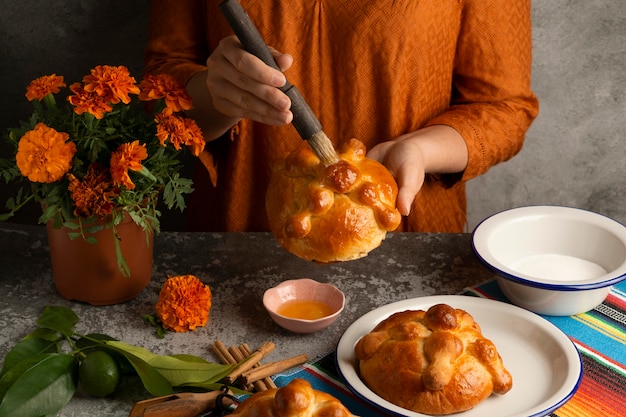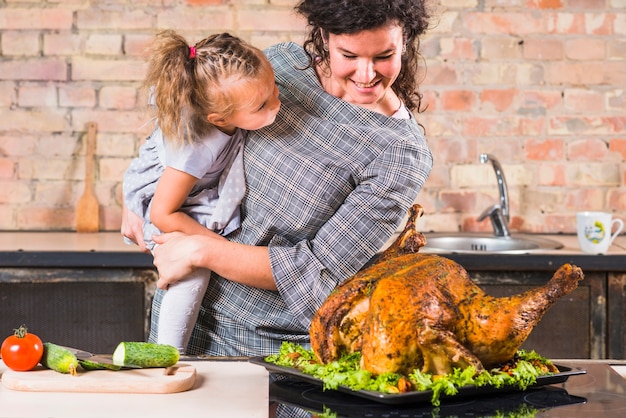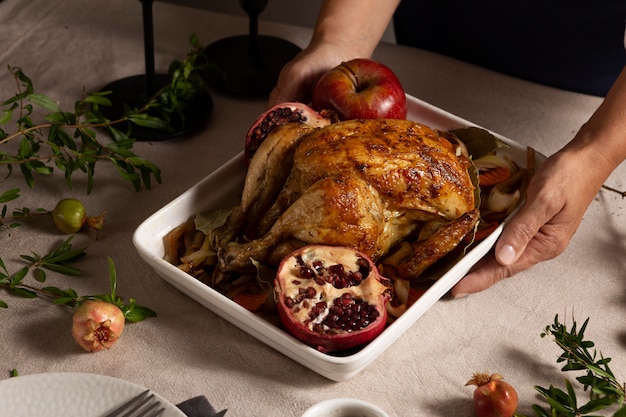chicken thighs! They're a real winner in my book. Juicy, flavorful, and oh-so-versatile, they're perfect for whipping up a quick weeknight dinner or a more elaborate Sunday roast. But, there's always that lingering question: how long do you cook them on the stovetop to get them perfectly cooked?
Well, I've been cooking chicken thighs for years, and I've learned a thing or two about getting them just right. So, I'm ready to share my secrets with you, from choosing the perfect thighs to mastering the art of stovetop cooking. Let's dive in!
(Part 1) Choosing the Right Chicken Thighs: The Foundation of Flavor

You know what they say: a good foundation makes all the difference. And when it comes to chicken thighs, choosing the right cut is your starting point for a delicious dish. Now, you don't need to go to some fancy butcher shop for this. You can find fantastic chicken thighs right at your local supermarket.
1. Bone-in vs. Boneless: A Matter of Preference
This is like choosing between tea and coffee – it’s all about personal preference. Bone-in thighs tend to be juicier, as the bone helps to lock in moisture during cooking. They also have a more intense flavor. Boneless thighs, on the other hand, are easier to handle and cook faster, making them a good choice for quick meals. Personally, I’m a big fan of bone-in thighs for that extra bit of flavor and juiciness. But, don't worry, both options will work beautifully.
2. Skin-on vs. Skinless: A Balancing Act of Flavor and Fat
Skin-on thighs are a real treat for those who appreciate a crispy skin. The fat renders during cooking, adding richness and flavor to the meat. Skinless thighs are a bit leaner, making them a good choice for those watching their fat intake. They'll still be delicious, just a bit less indulgent. I'm a big fan of the crispy skin, so I tend to go for skin-on whenever possible. But, skinless thighs are a great option when you're aiming for a lighter meal.
3. Size Matters: A Guide to cooking times
The size of your chicken thighs will definitely affect your cooking time. Smaller thighs will cook faster, while larger ones will take a bit longer. Keep this in mind when planning your meal, especially if you're working with a tight schedule. I've learned the hard way that underestimating cooking time can lead to a rushed dinner, and nobody wants a rushed dinner!
(Part 2) Getting Ready for Stovetop Cooking: Setting the Stage

Now that you have your perfect chicken thighs, it's time to get your pans ready and prepare for the stovetop magic!
1. Choose the Right Pan: A Tool for Success
This is an important choice. I’ve used everything from cast iron to non-stick, and each has its pros and cons. Cast iron is fantastic for retaining heat, leading to even cooking and a nice crispy exterior. non-stick pans are excellent for preventing sticking, making them great for quick sears. Personally, I find a good quality non-stick pan works best for chicken thighs. It reduces the chances of sticking, and a lighter pan is easier to handle.
2. The Power of Heat: A Crucial Element
Now, crank up the heat! You want your pan nice and hot, medium-high heat is what you're aiming for. We're talking searing heat here, not a gentle simmer. This intense heat will give you that beautiful golden brown crust and help lock in the juices. Don't rush the process. Give the pan a good few minutes to heat up before adding your thighs. I've learned the hard way that rushing can lead to uneven cooking and a less impressive crust. Patience is key!
3. Simple Seasoning: A Taste of Classic
I'm a big believer in keeping things simple when it comes to seasoning. Salt and pepper are your best friends. You can certainly add a bit of garlic powder or paprika for a touch of extra flavour, but keep it light. You don't want to overpower the natural taste of the chicken. And remember, you'll be adding sauces and other seasonings later, so don't go overboard with the initial seasoning. Let those chicken flavors shine!
(Part 3) Searing the Chicken Thighs: Crafting a Crispy Exterior

Here's where things get exciting. Searing is all about achieving that irresistible golden brown color and crispy exterior on your chicken thighs.
1. The Art of the Sear: Patience and Precision
Place your thighs in the hot pan, making sure there's enough space between them so they cook evenly. Aim for a good sear on each side, which takes a bit of time and patience. Don't be tempted to rush the process. Avoid overcrowding the pan, and give each thigh its own space to cook beautifully. Let them sit undisturbed for about 4-5 minutes before flipping them over to get that golden brown color on the other side.
2. The Importance of Patience: Letting the Flavors Develop
Searing is about getting that beautiful crust, but it's also about keeping those precious juices locked inside. That's why it's crucial to be patient. If you move the thighs too soon, you'll end up with a pale, bland chicken. Imagine it like a slow dance - the more you move, the less intimate it becomes. Let your chicken develop that lovely crust, it's worth the wait.
(Part 4) Bringing the Heat Down: Cooking Through to Perfection
The searing is done, and your thighs are looking fantastic. Now, it's time to bring the heat down and let those thighs cook through to perfection.
1. Time to Simmer: Gentle Cooking for Tenderness
Reduce the heat to medium-low, aiming for a gentle simmer. Cover your pan with a lid, and let the chicken cook until it's cooked through. This is where the size and type of thigh come back into play, remember?
2. Cooking Times: A Guide for Every Thigh
Here's a general guideline for cooking times, but remember, it's always best to use a meat thermometer to double-check.
| Type | Cooking Time |
|---|---|
| Bone-in, Skin-on | 15-20 minutes |
| Bone-in, Skinless | 12-15 minutes |
| Boneless, Skin-on | 10-12 minutes |
| Boneless, Skinless | 8-10 minutes |
3. The Importance of a Meat Thermometer: Safety First
I can't stress this enough: use a meat thermometer! You want to make sure your chicken is cooked through to an internal temperature of 165°F (74°C). This ensures the chicken is safe to eat and prevents any unpleasant surprises. I've had my fair share of undercooked chicken experiences, and let me tell you, it's not pretty. It's much better to be safe than sorry!
(Part 5) Adding Flavor and Sauce: Taking Your Chicken to the Next Level
Your chicken is cooked through, and now it's time to add some delicious flavor. We're going beyond a simple sear, we're aiming for a full-blown flavor experience!
1. The Power of Sauces: A Symphony of Taste
I'm a huge fan of a good sauce. It can truly elevate your chicken thighs. You can go with a classic pan sauce, a creamy mushroom sauce, or even a sweet and tangy glaze. The possibilities are endless. I've been known to whip up a quick pan sauce using the juices from the chicken, some butter, and a splash of wine or broth. It's simple, yet incredibly delicious.
2. Herbs and Spices: The Finishing Touch
Once your sauce is ready, add a sprinkle of fresh herbs like parsley, chives, or oregano. You can even throw in some chopped garlic for a bit of extra flavour. Remember, a little goes a long way. You don't want to overwhelm the taste of the chicken. A sprinkle of herbs is all you need to enhance the dish.
3. Rest and Serve: The Final Act
Give your chicken thighs a few minutes to rest before you serve them. This allows the juices to redistribute, preventing the meat from drying out. This will make your chicken thighs even more tender and juicy. Serve with your favorite sides, like mashed potatoes, roasted vegetables, or a simple salad. It's a perfect combination of flavors and textures.
(Part 6) chicken thigh recipes: Expanding Your Culinary Horizons
Now that you've mastered the basics, let's explore some delicious ways to put those chicken thighs to good use.
1. Chicken Thigh Curry: A Warm and Spicy Treat
This is a classic for a reason. You can use a pre-made curry paste or create your own with fresh ginger, garlic, and chillies. Add some coconut milk, onions, and your favorite vegetables for a flavorful and satisfying curry. I always add a splash of lime juice at the end for a touch of brightness. It's a perfect comfort food, especially during those colder months.
2. Chicken Thigh Fajitas: A Fiesta on Your Plate
Time to spice things up! This is all about grilling your chicken thighs, then slicing them into strips. You can use a fajita seasoning mix or create your own with cumin, paprika, garlic powder, and chili powder. Serve them with warm tortillas, grilled peppers and onions, guacamole, salsa, sour cream, and all your favorite toppings. It's a fun and interactive meal that's perfect for entertaining.
3. chicken thigh stir-fry: A Quick and Healthy Option
Looking for a quick and healthy meal? You can't beat a stir-fry. Cut your chicken thighs into bite-sized pieces, and toss them with your favorite vegetables and a light sauce. I love using a soy-based sauce with a bit of ginger and garlic. It's a delicious and satisfying meal that's packed with flavor and nutrients.
4. Chicken Thigh Paella: A Spanish Delight
Let's travel to Spain for a taste of paella. This dish is a real celebration of flavor, with chicken thighs, seafood, vegetables, and rice. It's a little more involved, but it's worth the effort. You'll want to simmer everything together in a large pan, and you can even finish it off in the oven for a crispy bottom crust. It's a meal that's perfect for sharing and enjoying with loved ones.
(Part 7) Tips for cooking chicken thighs: Mastering the Art
You've got the basics down, but here are some extra tips to make your chicken thigh cooking experience even better.
1. The Salt Myth: Less is More
You might have heard that you shouldn’t salt chicken before cooking, but that’s a myth. Salt actually helps draw out moisture and tenderizes the meat. So, go ahead and salt your chicken before you cook it. But, don't overdo it! A light sprinkling will do the trick.
2. Don’t Overcrowd the Pan: Space for Success
Remember what we talked about earlier? Don't crowd your pan. Give each chicken thigh enough space to cook evenly. If you have to cook them in batches, do it! You want that perfect sear and a golden brown crust.
3. The Rest is Key: Patience is a Virtue
Don't forget to give your chicken thighs a few minutes to rest after cooking. This allows the juices to redistribute, preventing them from drying out. This will make your chicken thighs more tender and juicy.
4. Leftovers: A Delicious Second Chance
Leftover chicken thighs are a blessing! You can use them in salads, sandwiches, or even for a hearty soup. They’re a great way to use up leftovers and create new delicious dishes.
(Part 8) FAQs: Your Chicken Thigh Questions Answered
I know what you're thinking. You've got a million questions. So, here are some of the most common questions about cooking chicken thighs, answered in detail:
1. What happens if my chicken thighs are overcooked?
You'll notice a few things if your chicken thighs are overcooked. The meat will be dry and tough, the juices will be gone, and the color will be a bit pale. You can try adding a bit of sauce or gravy to help compensate for the dryness, but it's not the same as a perfectly cooked thigh. It's always better to err on the side of caution and undercook slightly, as you can always cook it a little more. It's a lot harder to fix overcooked chicken.
2. Can I cook chicken thighs on the stovetop with a skin-on chicken breast?
You can certainly cook chicken thighs and breasts together, but you'll need to adjust the cooking time. chicken breasts cook much faster than thighs, so you'll want to make sure to cook the thighs for a longer period. It's best to use a meat thermometer to check the internal temperature of both cuts, and ensure that the breast is cooked to 165°F (74°C) and the thigh is cooked through to 165°F (74°C).
3. What if my chicken thighs stick to the pan?
This can be a real pain, but it can happen to the best of us. The trick is to make sure your pan is hot enough before you add the chicken. If it's not hot enough, the chicken will stick. You can also try using a little bit of oil or butter to help prevent sticking. And, make sure you don't overcrowd the pan, as this can also lead to sticking.
4. Can I cook frozen chicken thighs on the stovetop?
It's not recommended to cook frozen chicken thighs on the stovetop. They'll take much longer to cook and might not cook evenly. It's best to thaw them first in the refrigerator overnight. This will ensure that they cook through evenly and you'll have a much better meal.
5. What are some healthy side dish options to serve with chicken thighs?
There are so many healthy side dish options to pair with chicken thighs. I love roasted vegetables, like broccoli, asparagus, or Brussels sprouts. You can also go for a simple green salad with a light dressing. Or, try a quinoa salad for a bit more protein. The key is to choose options that complement the flavor of your chicken and provide a balanced meal.
I hope this comprehensive guide has given you all the information you need to cook perfect chicken thighs on the stovetop. With a little practice, you'll be able to master this delicious and versatile meal. So, go forth, and cook some amazing chicken thighs! You've got this!
Everyone is watching

Prime Rib Roast Cooking Time Chart: Per Pound Guide
Cooking TipsPrime rib roast. Just the name conjures images of lavish dinners, crackling fires, and hearty laughter. It’s ...

How Long to Bake Potatoes in the Oven (Perfect Every Time)
Cooking TipsBaked potatoes are a staple in my kitchen. They're incredibly versatile, delicious, and surprisingly easy to m...

Perfect Rice Every Time: The Ultimate Guide to Cooking Rice
Cooking TipsAs a self-proclaimed foodie, I've always been a bit obsessed with rice. It's the foundation of countless cuisi...

The Ultimate Guide to Cooking Asparagus: Tips, Techniques, and Recipes
Cooking TipsAsparagus. The mere mention of this spring delicacy conjures up images of vibrant green spears, crisp and burs...

Ultimate Guide to Cooking the Perfect Thanksgiving Turkey
Cooking TipsThanksgiving. Just the word conjures up images of overflowing tables laden with delicious food, the scent of r...
